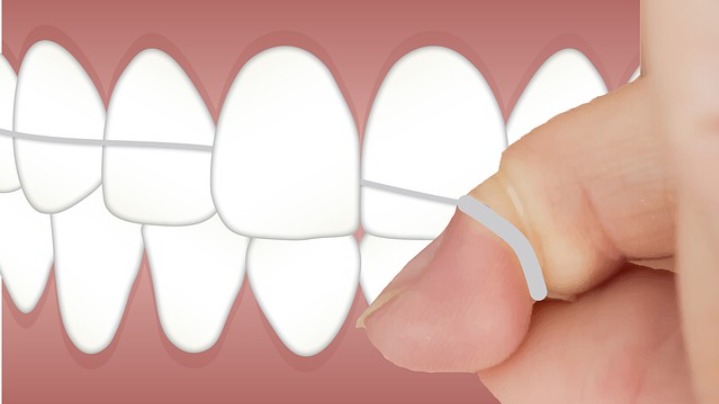
Top 6 Flossing Mistakes And How To Avoid Them
Flossing is an important part of maintaining good oral hygiene, but many people make mistakes when they floss. Common mistakes include not flossing often enough, using the wrong technique, or not flossing correctly. To ensure that you are flossing correctly, it is essential to understand the basics and how to avoid common mistakes.
Most people know the importance of flossing their teeth regularly. It can help prevent gum disease, bad breath, and tooth decay. But people commonly make flossing mistakes and don’t realize what they are doing. Some of the most common mistakes with flossing people make are as follows:
You Don’t Floss Every Day
Contents
First, it is important to floss at least once a day. Flossing should be done in the morning and at night, as this will help remove food particles and plaque built up throughout the day. When flossing, use a gentle sawing motion to get between the teeth and gums. Do not force the floss into the gums, as this can cause irritation and damage. Additionally, make sure to use a fresh section of floss for each tooth, as this will help to remove more plaque and bacteria.
This is not often enough if you only floss after eating corn on the cob. Flossing must be done daily, not just when you get food stuck between your teeth. The aim of flossing is not just to remove food particles but also to remove plaque that accumulates between your teeth. Plaque builds up quickly and needs to be removed daily with floss. If the plaque is left for too long, it becomes tartar, which is a hard substance that a dentist or hygienist can only remove.
You Don’t Floss The Teeth On Both Sides Of The Gap
Many people make the mistake of just flossing the gap between their teeth. Pushing the floss between your teeth and out again will not clean the plaque off the teeth properly. To floss effectively, you must clean the teeth on both sides of the gap.
To properly floss your teeth and prevent any potential issues from arising, it’s essential always to remember to clean both sides of the gaps between each tooth. This means using a gentle sawing motion with your dental floss to access each side of the gap and remove any plaque or food particles that may be stuck there.
You Don’t Floss Behind Your Back Teeth
This is a commonplace that people don’t realize needs flossing. Plaque can build up behind your back teeth, which are very difficult to clean with a toothbrush. To remove the plaque, this area needs to be cleaned with floss.
This area can be easily overlooked since it’s not visible; however, it’s equally important to take care of these teeth. Not only does skipping this step cause bad breath and plaque buildup on your molars and premolars, but it can also lead to painful cavities and tooth decay if ignored for too long.
To ensure that you are brushing and flossing correctly every time you clean your teeth, reach back when using your toothbrush and floss.
You Cut Your Gums When Flossing
To get the floss between their teeth, many people snap it down and cut their gums. This can hurt, and it can also cause your gums to recede if you do this regularly. Instead, gently move the floss back and forth to slide it between your teeth. It also helps to have the right tools for the job. Some floss brands are thicker than others, making it challenging to use, especially if your teeth are very close together. Waxed dental floss or tape can also easily slide gently between your teeth.
Not Flossing Under Your Gums
Make sure to floss to the gum line. This will help to remove plaque and bacteria that have built up in the area, and it will also help to prevent gum disease. It is also crucial to floss gently, as flossing too hard can cause irritation and damage to the gums.
It’s important to clean under your gums with the floss gently. There is naturally a gap slightly below the gum line, which can accumulate plaque. When flossing, gently push the floss below your gums to clean the area. This shouldn’t hurt or cut your gums.
Not taking the time to floss adequately may result in a buildup of tartar, leading to more frequent dental trips or even severe health conditions.
Flossing should be done at least once a day to remove all food particles, and bacteria aren’t allowed to remain on teeth or gums. When flossing, ensure you’re using gentle pressure and reaching down into the gum line, so no plaque remains behind. It’s also essential to replace your dental floss every few days, as it can lose effectiveness over time.
You Stop Flossing When Your Gums Bleed
Bleeding gums when you brush or floss are a sign that you have gum disease. Plaque left on your teeth irritates your gums which causes them to become inflamed and bleed. If your gums bleed when you floss, it is a sign that plaque has been left on your teeth and needs to be removed. Continue to floss even if it causes your gums to bleed; over time, the bleeding will lessen and eventually stop.
Conclusion
Flossing and brushing your teeth every day with the correct technique will keep your teeth and gums healthy. Avoiding common flossing mistakes will keep your mouth as clean and healthy as possible. It is well worth spending time looking after your teeth every day to keep them for the rest of your life. By following these tips, you can ensure that you are flossing correctly and avoiding common mistakes. Flossing is an important part of maintaining good oral hygiene, and by following these tips, you can ensure that you are flossing correctly and avoiding common mistakes.

